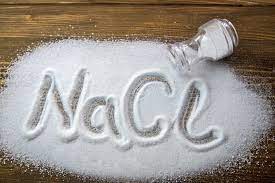You might think that the “fundamental theorem of arithmetic” would be ponderous and scary given its imposing title. “Fundamental.” Woo. Indeed the “fundamental theorem of calculus” suggests strongly that there are still a few open seats in Art History 101, a class most likely to be taught in an air-conditioned, darkened lecture hall with comfy seats and no mention of Riemann integrals. Whatever those are.
But unlike the fundamental theorem of calculus which lurks slobbering under your bed, the fundamental theorem of arithmetic is warm and cuddly, approachable by ten-year-olds, fun for the whole family. The fundamental theorem of arithmetic just says that numbers can be crunched into smaller numbers in only one way. Which you already knew.
42 can be crunched (“factored” if you must) into 2 x 3 x 7. There’s no other way to go about it. 42 is not equal to 5 x 11 for example, no matter what your drunk cousin says. 42 can be broken down into its prime components, 2 x 3 x 7. Drop the microphone. We’re done here.
Some numbers can’t be crunched at all. 29 can’t be factored. Nor can 2, 3, or 7. Is 29 lonely? Does 29 wish it were made up of smaller numbers like 42 is? No one knows. 29’s conversations with its health care professional are confidential, protected by HIPPA. All we know about 29 is that it is prime. Prime is another word for, “can’t be crunched.” Every number can be broken down into a string of un-smushable primes unless the number itself is prime to begin with. 29 is prime. 42 is not.
Just like numbers can be expressed in only one way, stuff in the real world is the same. Everything—snips and snails and puppy dogs’ tails—is made up of fundamental bits of matter called atoms. Two hydrogen atoms and one oxygen atom combine to form water, or possibly salt. It’s been some years since sophomore chemistry class. But even though some of the arrangements are unpleasantly complicated—glucose is six carbon atoms, 12 oxygen atoms, and six more hydrogen atoms—everything in the universe can be decomposed into these fundamental pieces.
Speaking of chemistry class and math class, isn’t it time to scurry across campus to psychology class? Shouldn’t there be something analogous to the fundamental theorem of arithmetic in Psych 101? Shouldn’t brains be like sugar, able to be explained by their component atoms? Wouldn’t it be great if brains behaved the way numbers do, the way substances do?
I, for one, would be beyond pleased if I could make informed guesses about the behavior of an individual based on a tone of background information. Divorced parents plus low-income neighborhood plus being bullied at school plus smoking pot at 15 plus a D in algebra two equals what? Yet no reasonable guesses can be made. Those factors can combine to produce a criminal or a congressman (although as Mark Twain points out, “I repeat myself.”)
Of course, the smart money suggests that a D in algebra two correlates with drinking wine in the gutter more frequently than with an adult who earns his livelihood as a math teacher. And kids who smoke pot when they’re young are four times as likely to have substance use issues as adults, but again some kids get clean and sober early and a small minority of people don’t start using until they are grown and have terrible trouble with addiction. Again, impossible to predict perfectly.
That’s why except for the most obvious advice about parenting—don’t hit your kids—it’s hard to focus on one aspect at a time and make any sense.
I have strict neighbors whose kids are perfectly presentable. I have relaxed friends whose kids are lovely. I also know strict parents whose offspring are out-of-control, snarky and unpleasant as well as relaxed parents whose children I wouldn’t let step on my lawn for fear that the grass would never grow again. Strict versus relaxed parenting style isn’t the answer—can’t be the answer—because there isn’t nearly enough information. A child is not a number. And what we need to know about the child isn’t as straight-forward as prime versus not. Kids, unlike numbers, are infinitely complex. Our sacred duty as loving parents is to figure out the combination of factors that give our kids the best opportunity to grow up healthy and whole.
Wouldn’t it be great if there were a fundamental theorem of children?







